| Columns Retired Columns & Blogs |
I have been listening to a J2 with Audio Note AN-J HE speakers for a couple of years now and my findings are very similar to yours. the amp creates a very strong emotional connection to the music.
I performed a full set of measurements on the First Watt J2, using my Audio Precision SYS2722 system (see the January 2008 "As We See It"). Before doing any testing, I preconditioned the J2 by running it at one-third power into 8 ohms for an hour. (With a an amplifier having a class-B or -AB output stage, this power level results in the highest thermal stress on the output devices.) At the end of the hour, the heatsinks were hot, at 125.6°F (52°C), though the top panel was a little cooler, at 113.3°F (45.2°C).
The First Watt's voltage gain into 8 ohms measured a lower-than-average 19.5dB from both its balanced and unbalanced inputs, and both inputs preserved absolute polarity (ie, were non-inverting). The unbalanced input impedance measured the specified 100k ohms at low and middle frequencies, dropping to a still high 65k ohms at 20kHz. The balanced input impedance was a consistent 208k ohms across the audioband.
The output impedance was relatively high for a solid-state design, at 0.5 ohm from 20Hz to 20kHz. As a result, the response with our standard simulated loudspeaker varied by ±0.35dB (fig.1, gray trace). This graph, taken with a balanced input (the unbalanced behavior was identical), shows that the audioband response is flat into 8 ohms (blue and red traces), with the ultrasonic rolloff reaching –1.5dB at 100kHz. The response rolled off a little earlier with lower impedances, but even into 2 ohms, the response was down by just 0.25dB at 20kHz (green trace). The J2 reproduced a 10kHz squarewave with short risetimes, and no overshoot or ringing (fig.2).
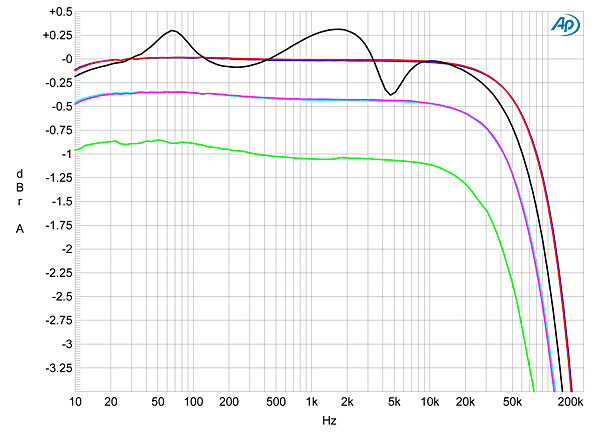
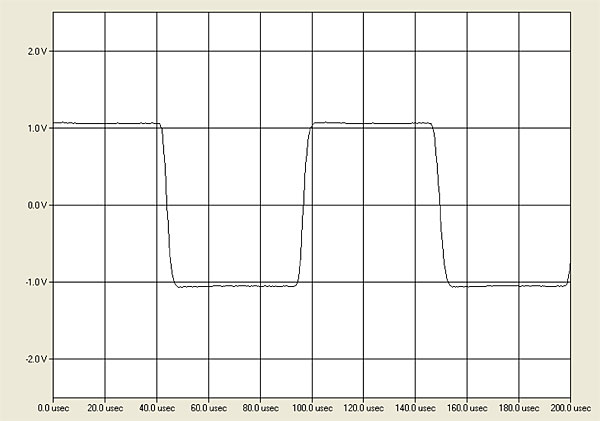
Channel separation was excellent, at >100dB in both directions below 3kHz, and still 80dB at 20kHz. The wideband, unweighted signal/noise ratio, ref. 2.83V and measured with the input shorted to ground, was a respectable 84.1dB (average of both channels), which improved to 88.3dB when the measurement bandwidth was restricted to the audioband, and to 99.75dB when A-weighted. Spectral analysis of the J2's noise floor (fig.3) revealed spuriae at 120Hz and its harmonics, which will be due to a non-zero impedance to ground; and at 60Hz and its odd-order harmonics, which will be due to magnetic interference from the AC power transformer. All of these spuriae are very low in level, however, and will not be audible.
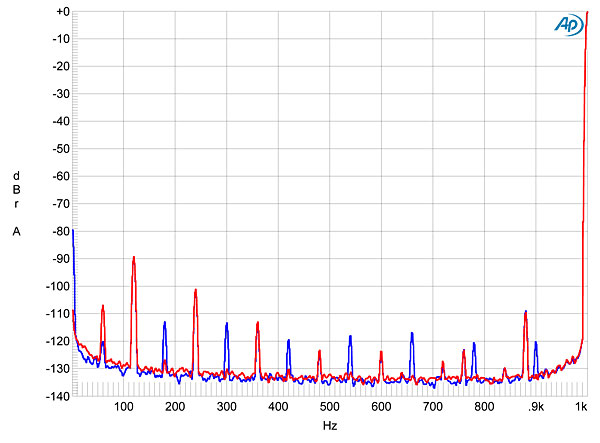
With "clipping" defined as when the THD+noise reaches 1%, fig.4 reveals that the J2 clipped at 25Wpc into 8 ohms (14.0dBW), with a gentle rise in THD+N below that power. Unusually, but as specified, the J2 delivers less power into 4 ohms (fig.5), clipping at 12.5Wpc (8dBW). In general, while the First Watt offers low levels of distortion into 8 ohms, it is less comfortable into lower impedance. This is shown graphically in fig.6, which plots the percentage of THD+N into 8 ohms (blue and red traces), 4 ohms (cyan, magenta), and 2 ohms (gray).
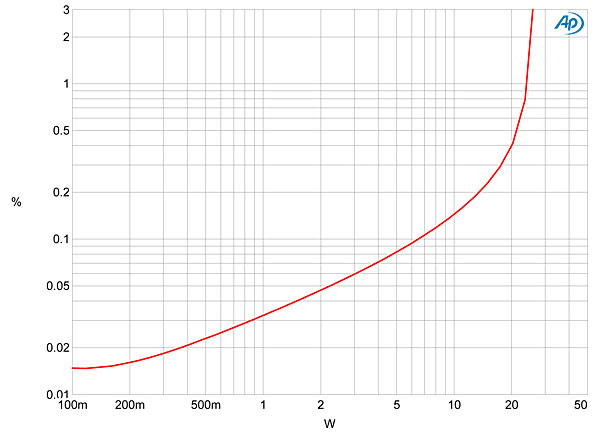
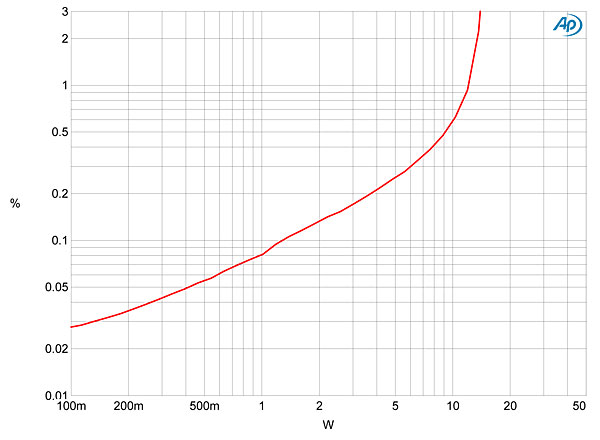
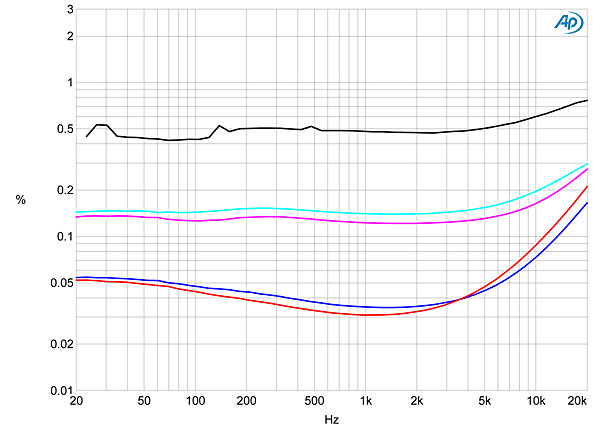
Fortunately, and as specified by the J2's designer, Nelson Pass, its distortion into higher impedances is primarily the sonically benign second harmonic (figs.7 and 8), though the third harmonic becomes stronger into 4 ohms, and is accompanied in the left channel by some higher odd-order harmonics (fig.9). Intermodulation distortion into higher impedances was also low (fig.10), with the second-order difference component at 1kHz lying at –74dB (0.02%). Into 4 ohms, this component rose by 10dB to 0.06% (fig.11)—but again, the left channel (blue trace) appears less linear than the right (red) into this lower impedance, with higher levels of higher-order intermodulation products.
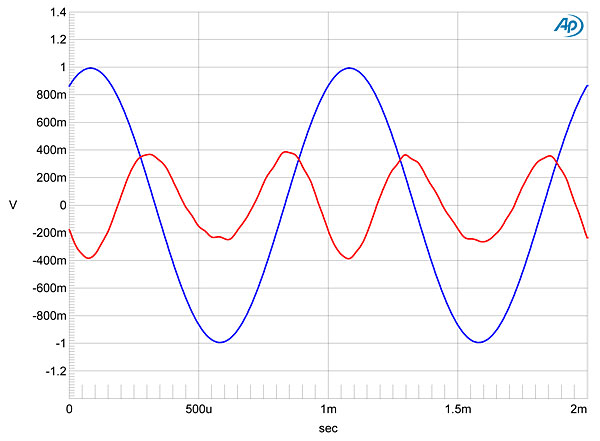
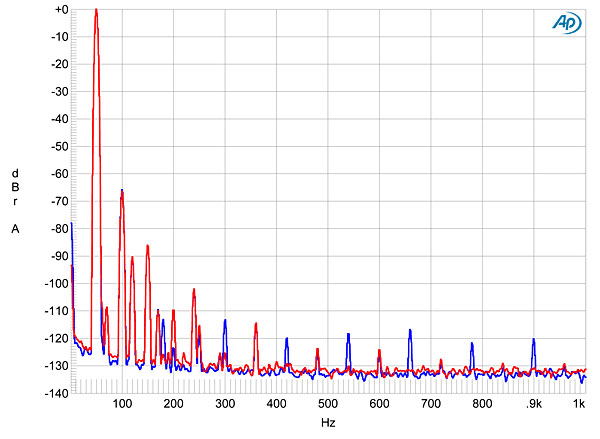
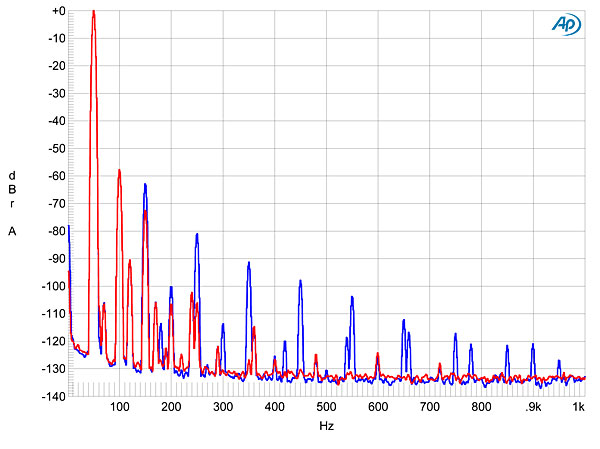
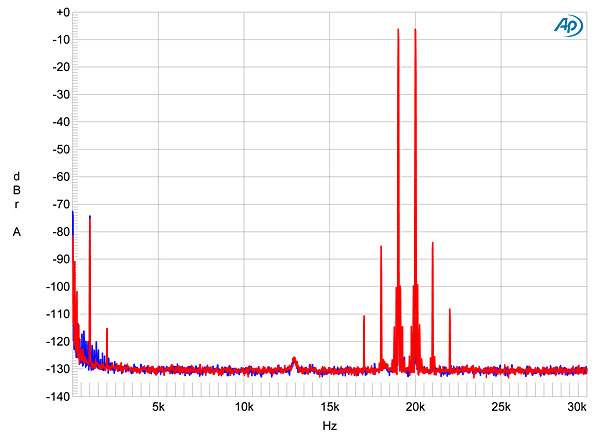
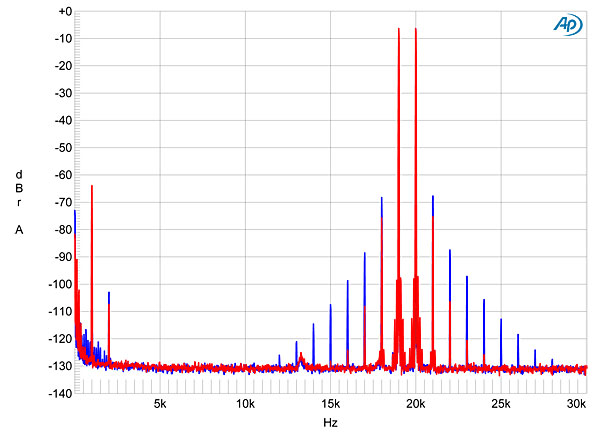
Other than the slightly worse linearity of the left channel into lower impedances, the First Watt J2 measured well. But its measured performance does suggest that owners not use it with speakers that drop below 4 ohms. But as HR found, with higher-impedance speakers, the J2 will sing!—John Atkinson

I have been listening to a J2 with Audio Note AN-J HE speakers for a couple of years now and my findings are very similar to yours. the amp creates a very strong emotional connection to the music.

Herb,
I should point out to readers that you were the first writer to popularize the later-to-become-iconic term "first watt" about 25 years ago.
Perhaps you are too humble to mention this...or, more likely, you totally forgot!

Anyone know how this amp compares to First Watt F7 amp? In general, I'm not sure how one would go about picking between the different models, other than to guess how well it matches the impedance of one's speakers, but if the speakers are sufficiently high in impedance and sensitivity, then what would you gain for the extra $1000 that the J2 costs over the F7?

Hi Ktracho- For more info regarding the difference between the J2 & F7 (and the Pass SIT-1 mono blocks), check out the write up by John Richardson on all three amps with 3 different loudspeakers including Zu's Druid Mk. V, ATC's SCM 19 version 2 and my own Carbon 7SE's.
https://parttimeaudiophile.com/2016/09/09/review-j2-sit-1-and-f7-first-watt-amplifiers-by-nelson-pass/

Nicely done! HR.
this amp is on my must-demo list. I would have subtracted Charlie Hansen (a flake) and added Dan D'Agnostino to your list as above.
Otherwise a very good article. Happy Listening!

My guess is you have never listened to any Ayre products (nor even D'Agostino's for that matter). If you have, would you describe the sound as "flakey" too? Actually, logic dictates that you must, since you want him off the "Chi Masters" list. Can I safely assume that you dislike the sound of Ayre amps? Or do all designers have to align with your personal beliefs, despite the fact that they produce amazing products...

Sure, I have auditioned both D'Agostino and Ayre amps. Nothing inherently wrong w/ the products per se. I have seen many of CH 's comments in the various forums and he has always presented himself as a flake.
Those of us who have been in the hobby for 20+ years understand that it is "flake" laden.

it's listed as 101 dB on the website. Are yours really 96 dB?

it's listed as 101 dB on the website. Are yours really 96 dB?
The specified sensitivity is, shall we say, "optimistic." My estimate of our review sample's voltage sensitivity was 91.5dB/2.83V/m.
John Atkinson
Editor, Stereophile

I'm surprised. In the measurements for the Soul speaker review, you state "My estimate of the Zu Soul Supreme's voltage sensitivity was 91.5dB/2.83V/m, which is lower than the specified 97dB/W/m but still much higher than average". Zu states 101 dB. Where does the "specified 97db/W/m" number come from? And has Zu had any response to this?
Steve Tag

does this amp have a built in equaliser (Fig.1)?